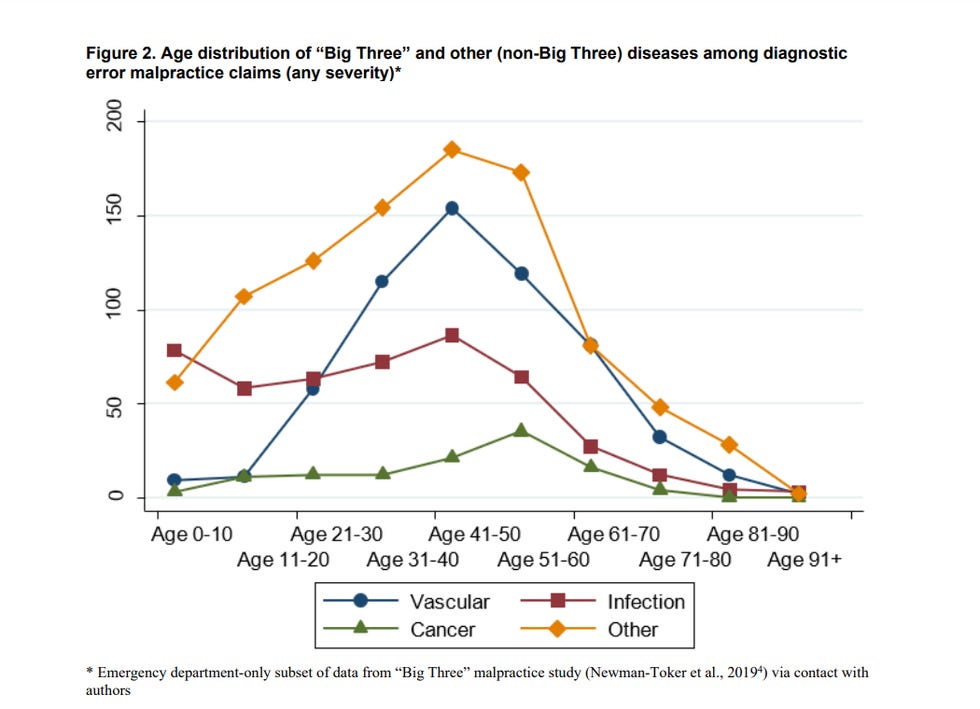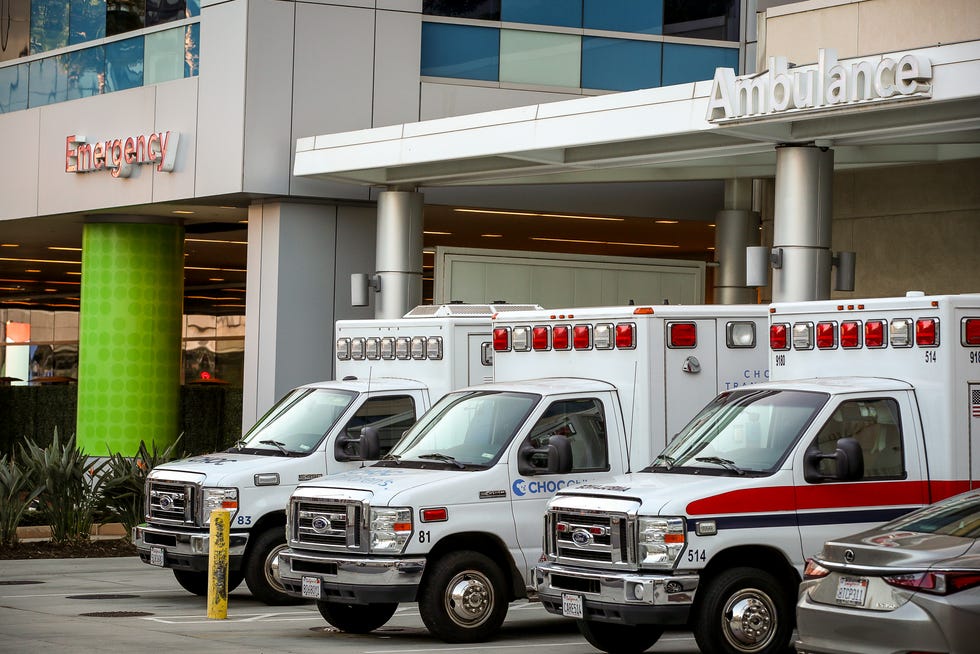With stroke being number 1, it is your responsibility to have ALL the classic symptoms:
Sudden numbness or weakness in the face, arm, or leg, especially on one side of the body. Sudden confusion, trouble speaking, or difficulty understanding speech. Sudden trouble seeing in one or both eyes. Sudden trouble walking, dizziness, loss of balance, or lack of coordination.
Don't do the dizziness one, if you're a young adult you'll get nailed for intoxication of some sort.
Amy on her 36 hour wait for a diagnosis.
‘Doesn’t Look Like He Needs an Ambulance’: 17-Year-Old Boston Student Has Stroke In Class. School Nurse Argues with His Mom to Pick Him Up Instead of Calling 911
The latest here:
What are the top five conditions misdiagnosed in the ER?
Hundreds of thousands of people die each year because they are misdiagnosed in hospital emergency rooms, according to a new study from the U.S. federal government.
The report, released Thursday by the Department of Health and Human Services’ Agency for Healthcare Research and Quality, found:
- 7.4 million patients are misdiagnosed of the 130 million annual visits to ERs. The number translates to about 1 in 18 people receiving a wrong diagnosis.
- 2.6 million patients receive a harm that could have been prevented.
- 370,000 patients are permanently disabled or die because of the misdiagnosis.
Here are the top five conditions often misdiagnosed in hospital emergency rooms:
1) Stroke
Stroke is a disease that affects the arteries leading to and within the brain. According to Stroke.org, it is the No. 5 cause of death and a leading cause of disability in the nation. A stroke occurs when a blood vessel that carries oxygen and nutrients to the brain is either blocked by a clot or bursts (or ruptures).
Every 40 seconds, someone in the U.S. has a stroke, and women are more prone to strokes than men.
2) Heart attack
Also known as a myocardial infarction, heart attacks happen when one or more areas of the heart muscle don't get enough oxygen. According to Johns Hopkins Medicine, it happens when blood flow to the heart muscle is blocked.
If the blood and oxygen supply is cut off, muscle cells of the heart begin to suffer damage and start to die. Irreversible damage begins within 30 minutes of blockage. The result is heart muscle affected by the lack of oxygen no longer works as it should.

3) Aortic aneurysm or dissection
An aortic aneurysm is a bulge that occurs in the wall of the aorta, a major blood vessel that carries blood from the heart to the rest of the body, Patrice Desvigne-Nickens, a medical officer at the National Heart, Lung and Blood Institute, told USA TODAY.
It can happen anywhere in the aorta.
When the walls of aorta are weakened, the force of blood pushing against the weakened walls can build up into an aneurysm.

4) Spinal cord compression or injury
An injury that includes damage to any part of the spinal cord or nerves at the end of the spinal canal (cauda equina). According to the Mayo Clinic, it often causes permanent changes in strength, sensation and other body functions below the site of the injury.
Paralysis from a spinal cord injury can be referred to as:
- Tetraplegia. Also known as quadriplegia, this means that your arms, hands, trunk, legs and pelvic organs are all affected by your spinal cord injury.
- Paraplegia. This paralysis affects all or part of the trunk, legs and pelvic organs.
5) Venous thromboembolism
A Venous thromboembolism – a term referring to blood clots deep in the veins – is an underdiagnosed and serious, yet preventable medical condition that can cause disability and death.
According to the U.S. Centers for Disease Control and Prevention, if the clot is small, and with appropriate treatment, people can recover from the condition. However, there could be some damage to the lungs. If the clot is large, it can stop blood from reaching the lungs and is fatal.
Go deeper
- The science of strokes:How they happen, who is most at risk
- What is an aortic aneurysm:Reporter Grant Wahl's cause of death at World Cup found to be aneurysm
- Booze may increase your risk of stroke:Drinking alcohol may increase the risk of having a stroke in your 20s and 30s, study finds
- Fetterman improving from stroke:John Fetterman can work 'full duty in public office,' doctor says
Natalie Neysa Alund covers trending news for USA TODAY. Reach her at nalund@usatoday.com and follow her on Twitter @nataliealund.
No comments:
Post a Comment